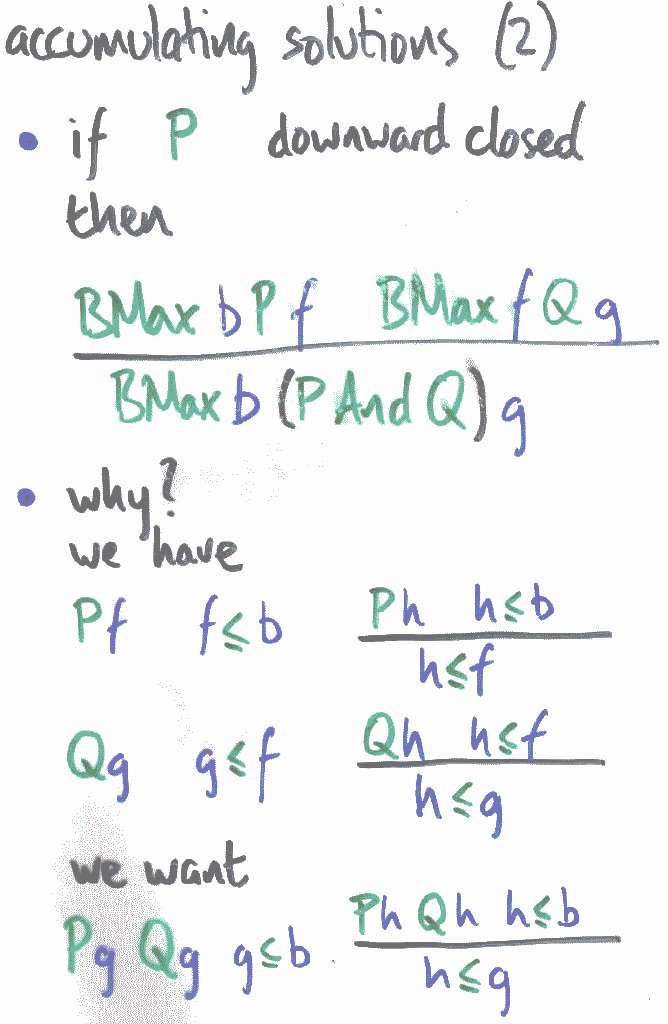
The optimist's theorem says that if we can decompose a problem into a downward-closed bit P and the rest (not necessarily downward-closed) Q, then we may perform relative optimisation in sequence, reducing the accumulated bound b to some f which maximises P, then maximising Q relative to f. Effectively, we reduce the P component of the constraint to bounding by f.
Decomposing the hypotheses and the conclusion, we acquire or require three things each:
You can tell this is an abstract slide, because it's all green and blue, not red and purple.
Let's complete the proof.
Next: the optimist's proof | Prev: downward closure | Up: contents